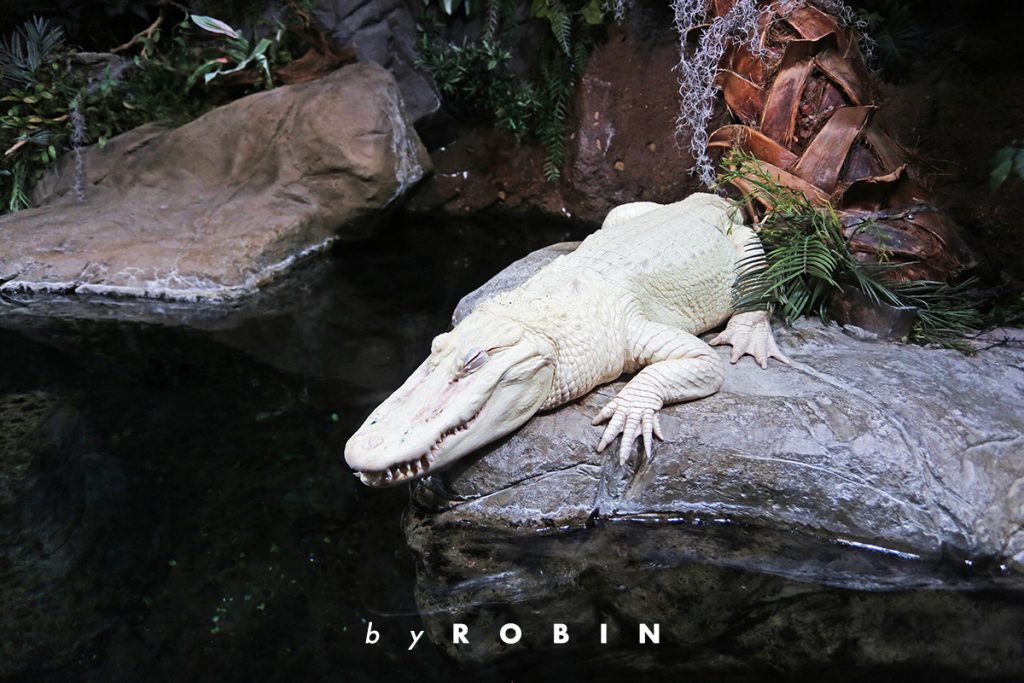Where is the world’s largest aquarium? In 2014, a wealthy Chinese developer built the massive Chimelong, which reportedly took over the title of the world’s largest aquarium. For the previous decade, this record was held by the “Georgia Aquarium” in Atlanta. However, even today, it remains one of the most technologically advanced and immersive aquarium experiences in the world.
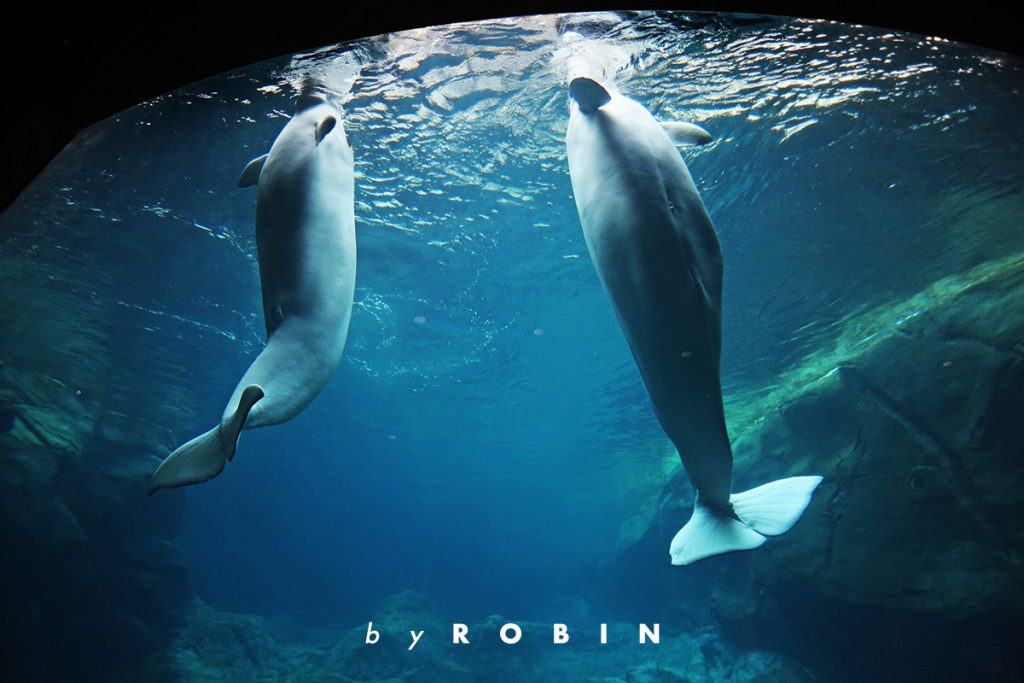
Atlanta is a city with great functionality, where most major attractions are clustered around Centennial Olympic Park. The Georgia Aquarium, resembling a massive cruise ship in its design, stands out prominently. Boldly displayed on the most noticeable part of this building is “#1 in US,” showcasing an undeniable sense of pride and dominance.
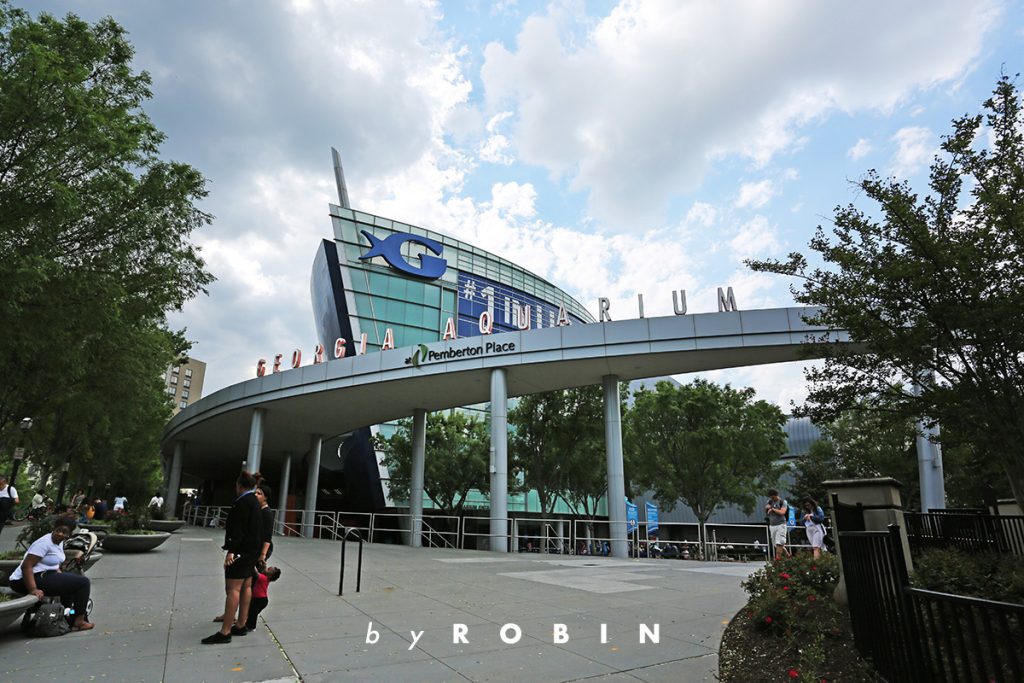
Upon buying tickets and stepping inside, visitors are greeted by a monument that pays great respect to its creators—a billionaire couple in the building materials retail business. They raised $300 million to fund this aquarium, making it a lasting landmark in Atlanta. Behind the monument lies a lengthy, dimly lit corridor flanked by massive fish tanks with curved glass panels. These tanks house only one type of fish, known for its tendency to thrive in large schools in the wild. The shimmering silver of these fish as they swim creates an immediate sense of being submerged in an underwater world.
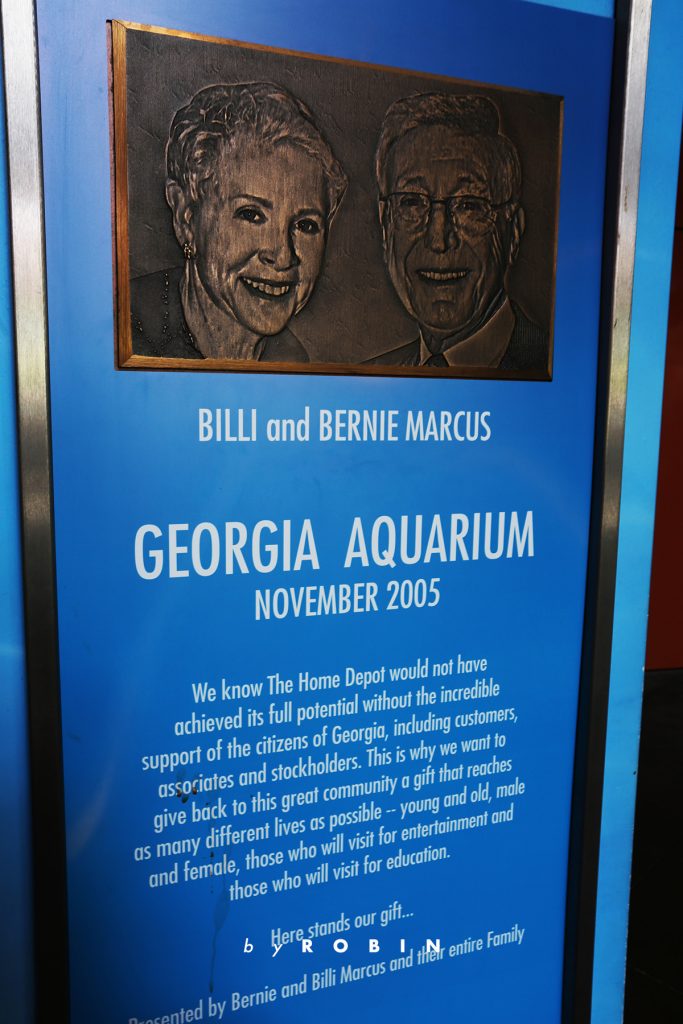
I’ve visited numerous aquariums, and most of them offer what they call a recommended itinerary due to the linear relationships between many of their exhibition halls. While there are also some guided routes here at the Georgia Aquarium, I feel it’s completely unnecessary to stick to any set path. The exhibition halls at the Georgia Aquarium are arranged around a massive atrium, making each theme easily identifiable and allowing you to quickly reach any area that piques your interest.
Before delving into the highlights of the Georgia Aquarium, it’s crucial to understand one key aspect that makes this place extraordinary: Atlanta is quite far from the sea. So as you read on, always remember that this aquarium is situated in an inland city, which adds an extra layer of impressiveness to many of its features.
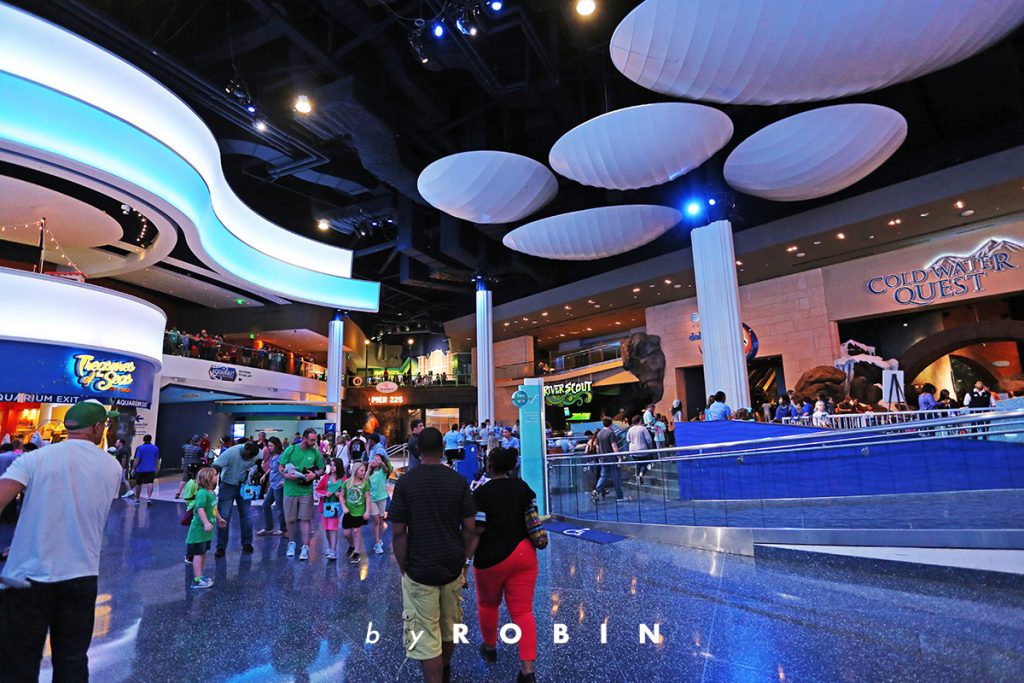
If there’s one highlight to mention, it would be the “Great Barrier Reef Dive Walkway” in the Tropical Diver exhibit. However, before reaching it, you’ll pass through a series of small tanks showcasing jellyfish and tropical fish. In my opinion, the jellyfish exhibit here doesn’t stand out much compared to those in many larger aquariums. Nonetheless, perhaps due to some illusion, it always seems like the jellyfish here are especially lively. This might be due to meticulous care and excellent facilities.
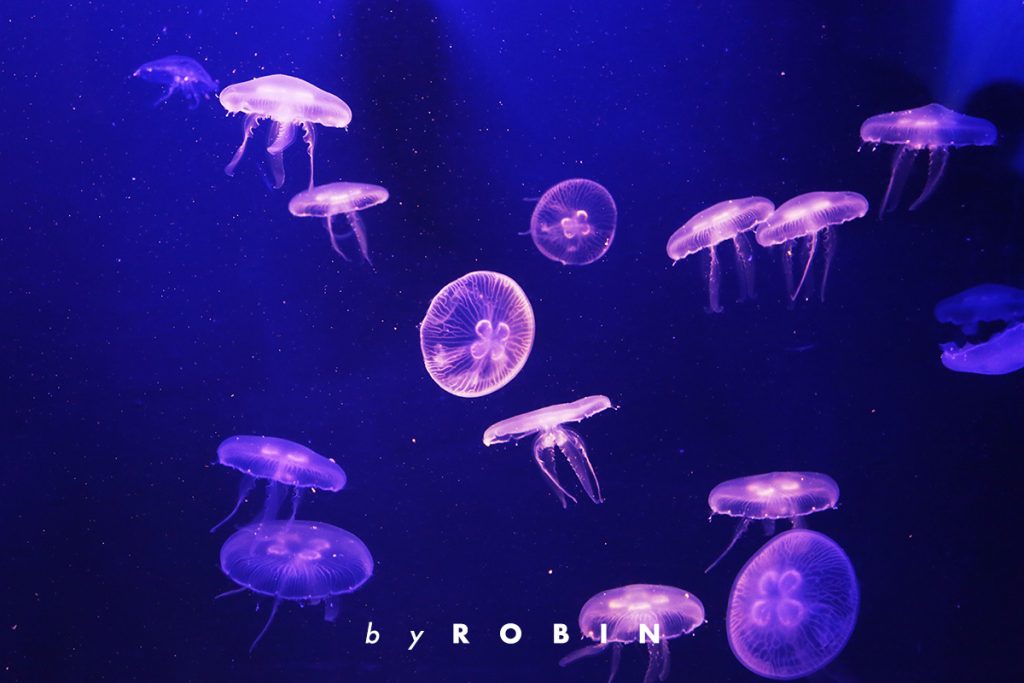
A single glance at the “Great Barrier Reef” is enough to realize that this super aquarium is unparalleled worldwide. It meticulously replicates a 5.5-meter-deep coral reef ecosystem, presenting what is typically an underwater diving experience in an easily viewable format. Essentially, it’s a massive coral wall that offers a cross-sectional view of a coral reef ecosystem. The 500 species of corals and various soft-bodied animals thriving on the reef are not mere decorations; they are all genuine living creatures. This location boasts the highest number of live corals globally, with most being artificially cultivated rather than harvested from nature. Many of these corals have been thriving for over 20 years. The reef rocks supporting these corals weigh over five tons and originate from Fiji’s seabed, effectively recreating every aspect of a natural coral reef ecosystem.
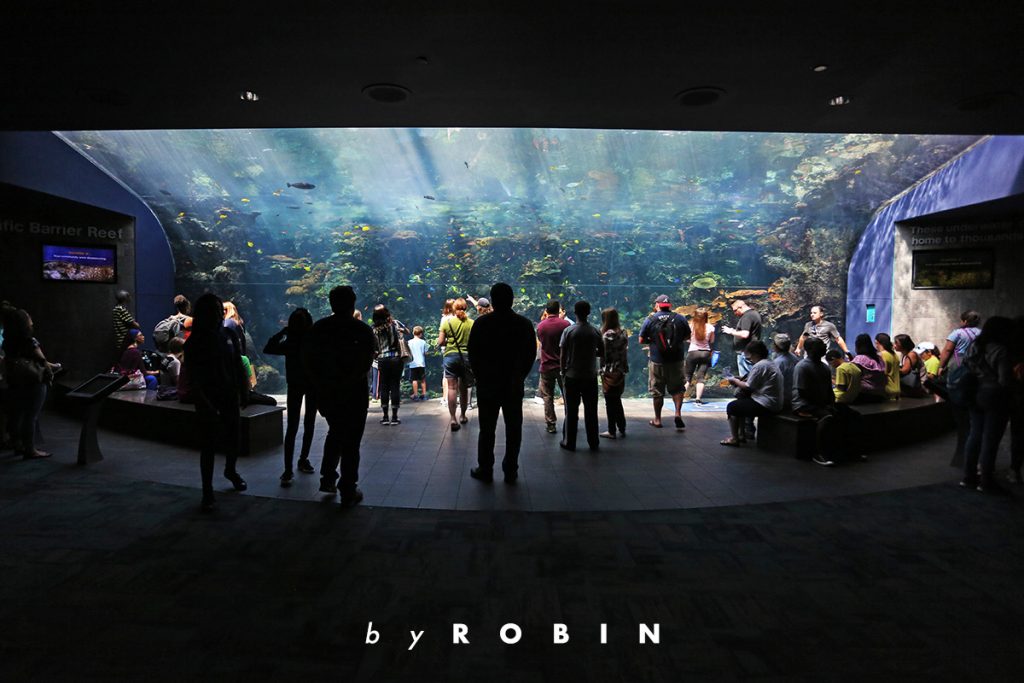
To recreate an authentic coral reef environment, this aquarium features an arch-shaped design that simulates realistic waves overhead, giving visitors a sense of diving underwater. Spanning nearly 15 meters wide, this underwater world showcases 3,000 species of coral reef fish and allows visitors to witness the natural phenomena of bubbles and silt swirling around the reefs. The fish here lead lives remarkably similar to their counterparts in the wild, swimming frantically for survival. The effort and advanced technology required to achieve this setup are likely beyond our comprehension. Just know that such an exhibit is almost unparalleled globally.
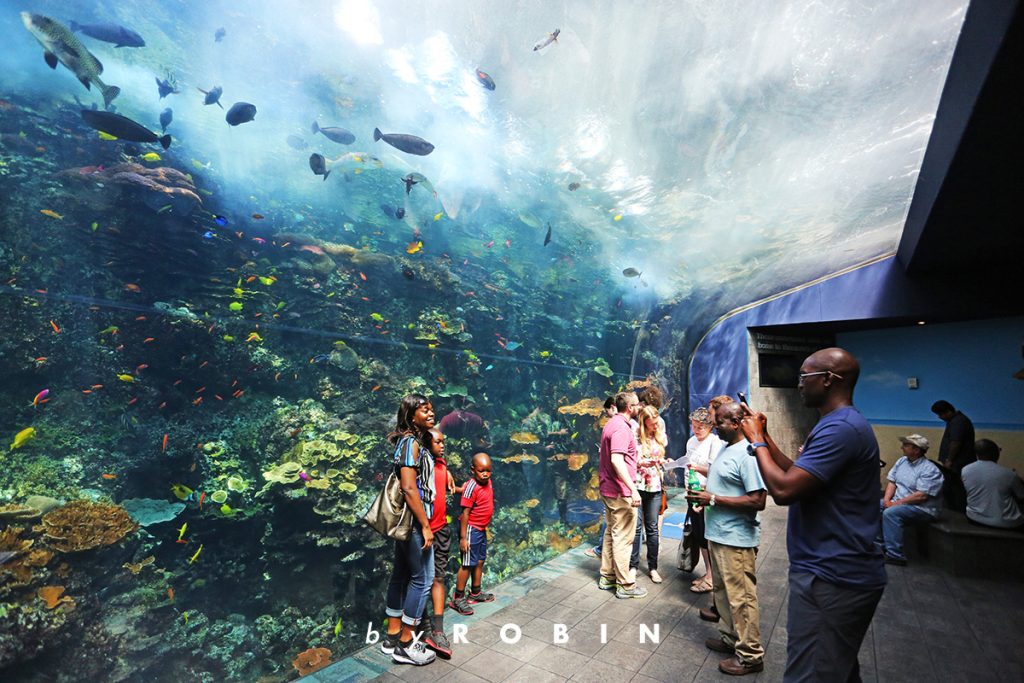
The “Great Barrier Reef” exhibit is undoubtedly one of Georgia Aquarium’s main attractions, but it’s not the most awe-inspiring sight. The aquarium’s largest tank takes up three-quarters of the entire space and holds the title of the world’s largest aquarium tank. It houses the biggest marine fish in existence—the whale shark. This area is easy to locate thanks to a life-sized model of a whale shark hanging at the entrance to Ocean Voyager, making it impossible to overlook.
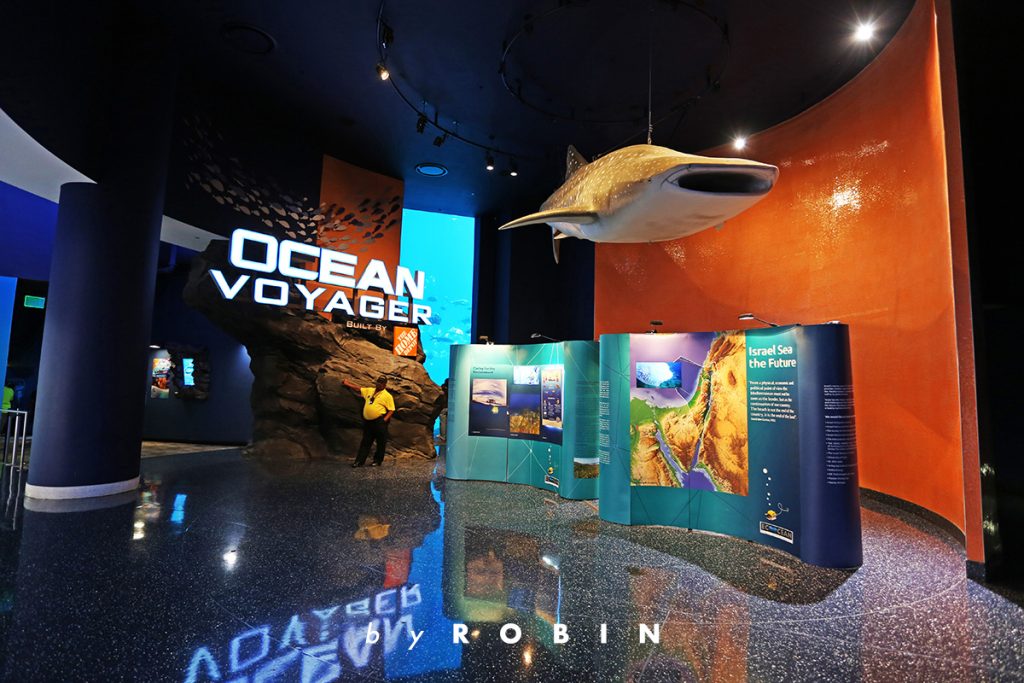
The initial observation windows in this pavilion seemed quite ordinary at first. However, upon entering an underwater tunnel estimated to be over 50 meters long, everything changed. Initially mundane, the experience suddenly became extraordinary as a massive shadow passed overhead. The shadow took several seconds to completely pass by from head to tail, prompting gasps of amazement from everyone present—it was a whale shark. Clearly, the impressive presence of the whale shark overshadowed everything else. Nonetheless, one cannot ignore the presence of several giant stingrays and exceptionally large sea turtles here. In such a vast space, it’s only fitting that its inhabitants are equally grand in scale. Besides these giants, the underwater ecosystem here includes over 1,000 other species of fish, though at this moment they merely serve as background scenery.
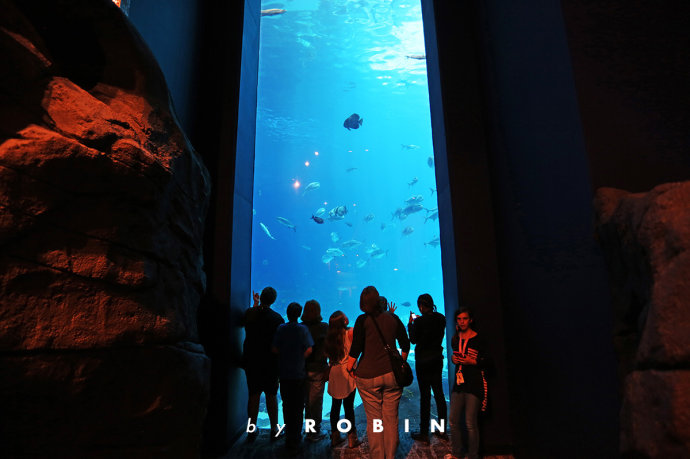
In the midst of people glancing around and hesitating, it took roughly 20 minutes to traverse the underwater tunnel. Emerging at the end, visitors find themselves in a spacious room that offers the perfect vantage point to witness the majesty of the world’s largest aquarium tank. An entire wall of this expansive room features a massive acrylic viewing window, 10 cm thick, behind which lies 6 million gallons of seawater. The dim light filtering through this blue water bathes the room in a cool, blue hue. Here, all one needs to do is find a step to sit on and quietly observe the marine life slowly swimming by in this gigantic tank. From this perspective, it’s easy to see how these creatures compare in size to humans—many seemingly ordinary fish are actually quite large, not to mention whale sharks that can grow up to 20 meters long.
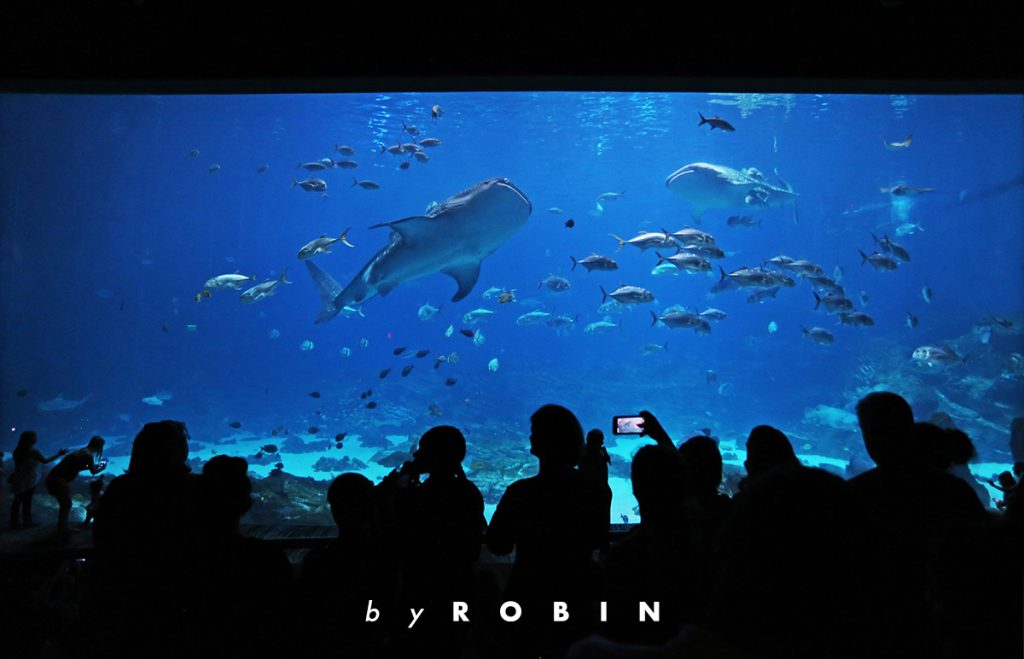
The whale sharks are undoubtedly the stars of the show here. Although an introduction mentioned that there are two of them, I always suspected there were more. It wasn’t until a moment when all four whale sharks appeared simultaneously that I felt a sense of awe almost as profound as watching whales out at sea. These majestic creatures glide slowly and gracefully through the water, needing to swim continuously to ensure oxygen-rich seawater flows through their gills for breathing. Every few minutes, one would pass by the viewing window, prompting us to guess which one it might be each time. It’s perfectly normal for anyone to be deeply moved by such a magnificent sight and to linger in this darkened room without feeling awkward. In fact, we spent about an hour here, and judging by the people around us who seemed lost in thought, it appeared no one had moved much either.
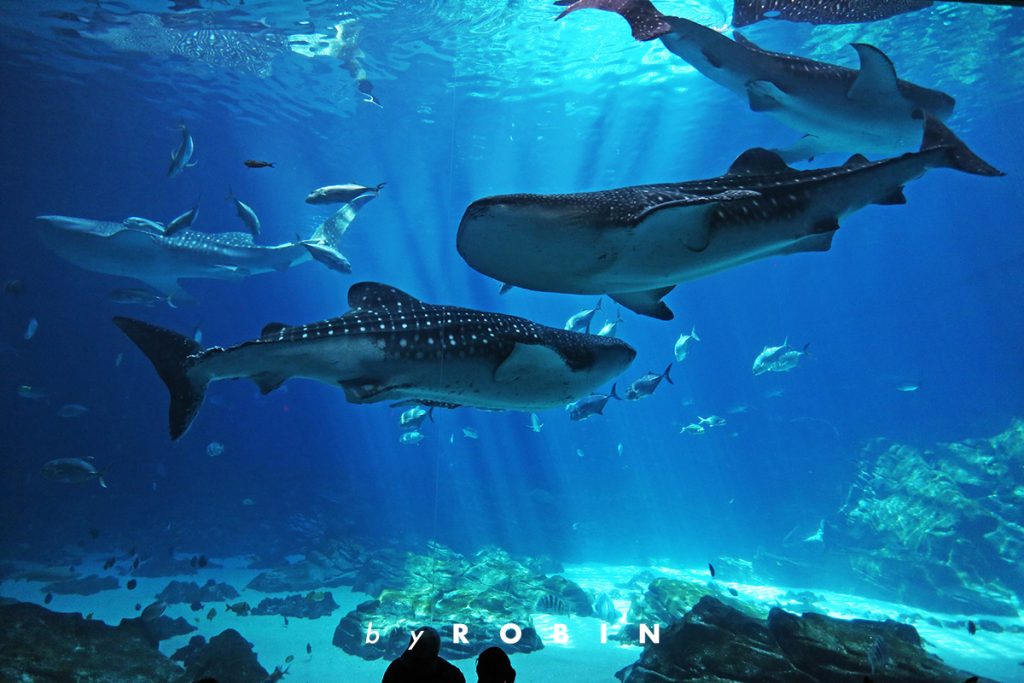
Cold Water Quest, as the name suggests, is an exhibit showcasing polar marine animals. Naturally, this includes animals like penguins and sea otters that can come onto land. My wife and I have always had a deep affection for sea otters. However, the sea otter exhibit here was somewhat disappointing due to its dim lighting and less-than-clear glass. Additionally, the otters had just eaten and were napping, lying with their backs to us without any movement for quite some time. Nevertheless, having sea otters is a hallmark of a top-tier aquarium. Although the Georgia Aquarium doesn’t go to the extremes of making sea otters perform like in some Japanese aquariums, seeing such world-class rare animals is still a rare treat.
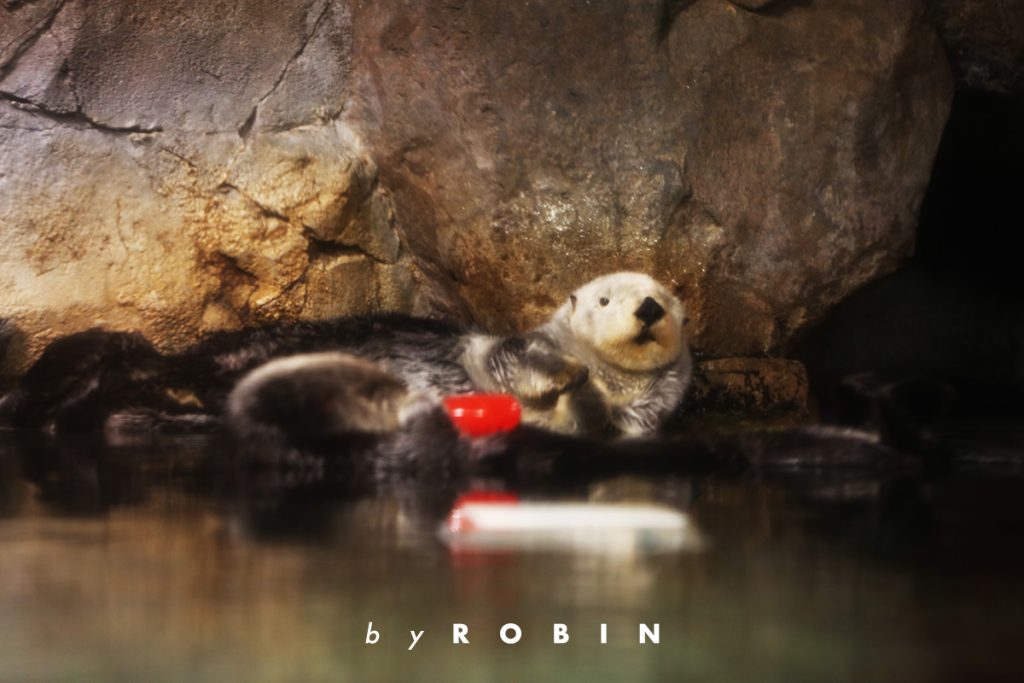
The South African Penguin Zone in this exhibit is quite fascinating. These cute penguins enjoy a spacious habitat. However, it’s uncertain if they realize that their home is crisscrossed with numerous interconnected tunnels where children often crawl through, attempting to catch glimpses of their daily lives. This design certainly allows people to get closer to the penguins, though I’m not sure if the penguins find it annoying.
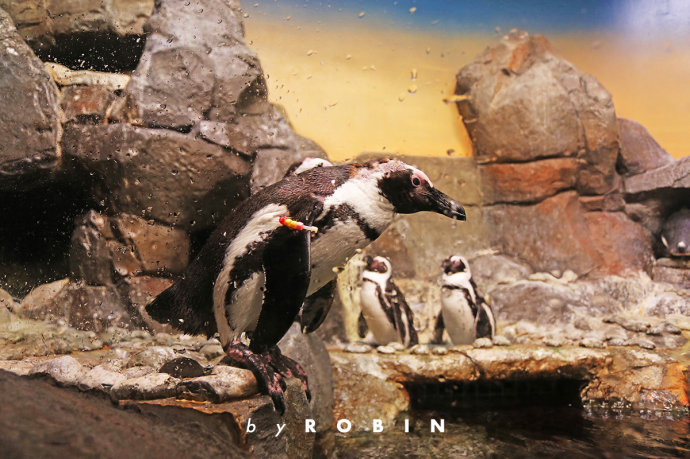
Beluga whales are exceptionally intelligent and curious animals. I recall that in other places, young belugas would react to visitors’ movements as if trying to communicate with them. However, here at Georgia Aquarium, these belugas seem more experienced; regular visitor activities no longer capture their curiosity. So apart from surfacing for their performance tasks, they mostly keep themselves entertained underwater.
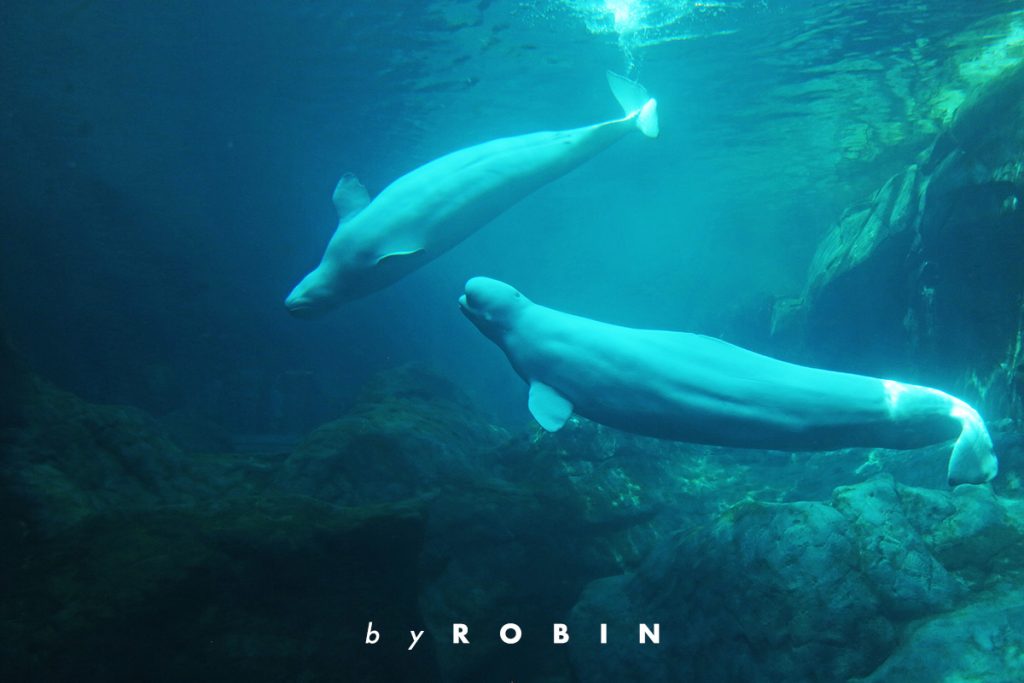
Next to Cold Water Quest is a narrow corridor that leads to Dolphin Tales, the area dedicated to housing and showcasing dolphins. Although I didn’t have time to watch a dolphin show, I was able to observe the dolphins during their downtime. These dolphins are bottlenose dolphins (Tursiops truncatus), a species widely used in dolphin shows worldwide. This widespread use isn’t necessarily a positive thing, as taming and capturing dolphins isn’t considered humane. However, according to Georgia Aquarium, most of their animals are bred in captivity rather than being captured from the wild. I choose to believe that these playful-looking dolphins were indeed born and raised in these pools.
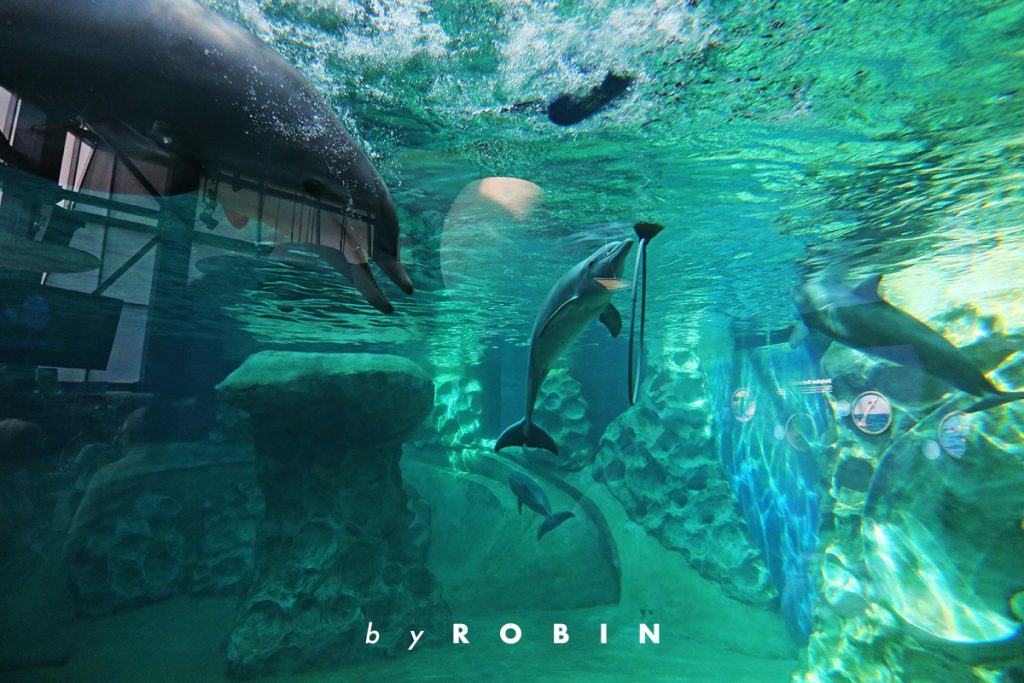
Despite missing out on the dolphin show, I was fortunate enough to catch the last sea lion performance of the day. The Georgia Aquarium stands out not only for its diverse array of species but also for its meticulous attention to detail. Even the waiting area for entering the performance arena is creatively designed. It resembles a fishing port dock, making those in line feel as if they’re about to board a fishing vessel. Upon closer inspection, you’ll notice that the intriguing posters are actually LCD screens, with animated canned fish blinking and Pixar-style seabirds on the roof occasionally turning their heads to glance at you.
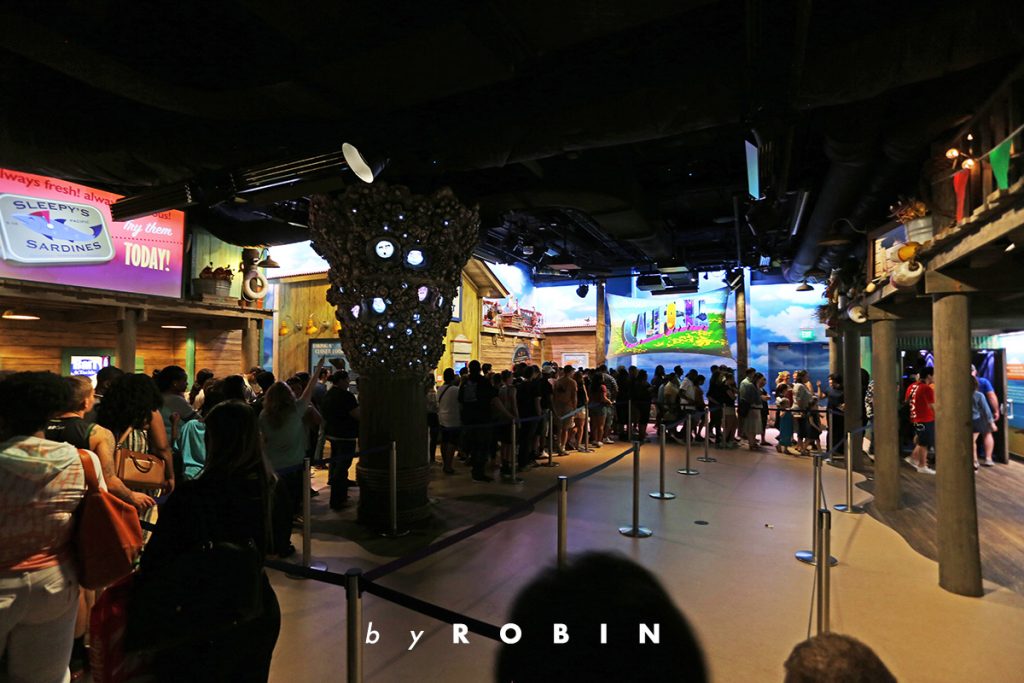
If there’s one thing I can say about the sea lion show, it’s that it’s fairly standard. Perhaps I’ve just seen too many similar performances to be easily impressed anymore. One important tip: if you plan on catching this show, make sure to arrive early and get in line. Savvy visitors quickly realize that only the two central stands provide an unobstructed view, and these seats fill up fast. If you end up sitting on the sides, you’ll find that about a third of your view is obstructed by a large square pillar. The performers are aware of these venue limitations, which is why they have three sea lions performing at once. They often split their impressive tricks across the left, center, and right sections of the stage to ensure most spectators feel they got their money’s worth.
Overall, this aquarium stands out as having one of the most diverse collections of species, state-of-the-art facilities, and an exceptionally clean and comfortable environment among all aquariums I’ve visited. Plus, it offers a variety of activities that you might expect or find surprising in an aquarium setting. These include overnight stays at the aquarium, New Year parties hosted there, various 4D movie experiences, and the exclusive “Behind the Seas Tours.”
The behind-the-scenes tour is especially remarkable as it grants access to areas typically reserved for staff members only. This allows visitors to gain a firsthand understanding of the immense effort required to operate what was once considered the world’s largest aquarium and to see cutting-edge technology up close. In some sections of this tour, you can enjoy unique perspectives on massive tanks and their inhabitants.
Although this aquarium might no longer hold the title of being the largest in the world, in many ways it could still be considered one of the best for years to come.
